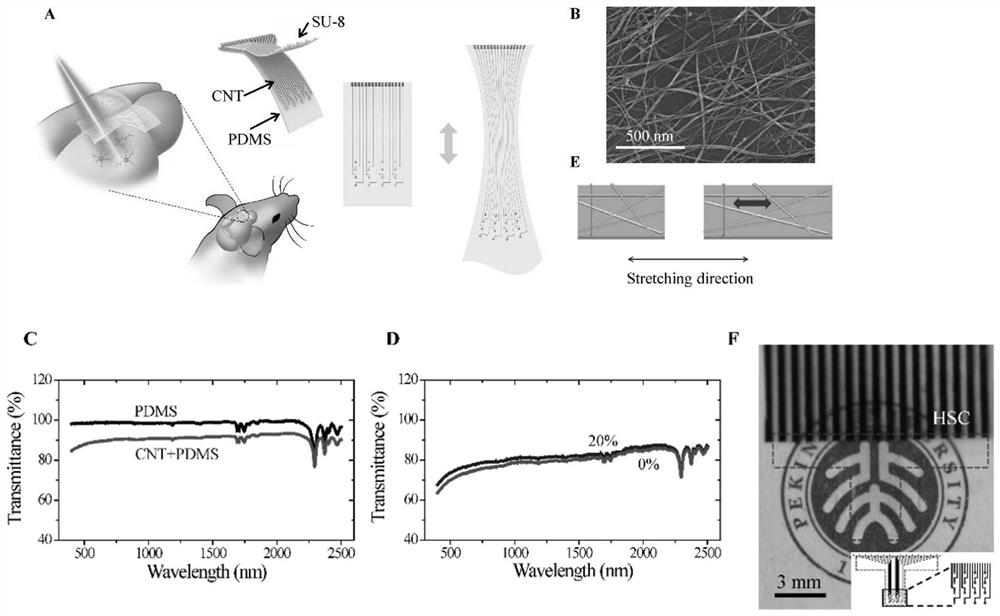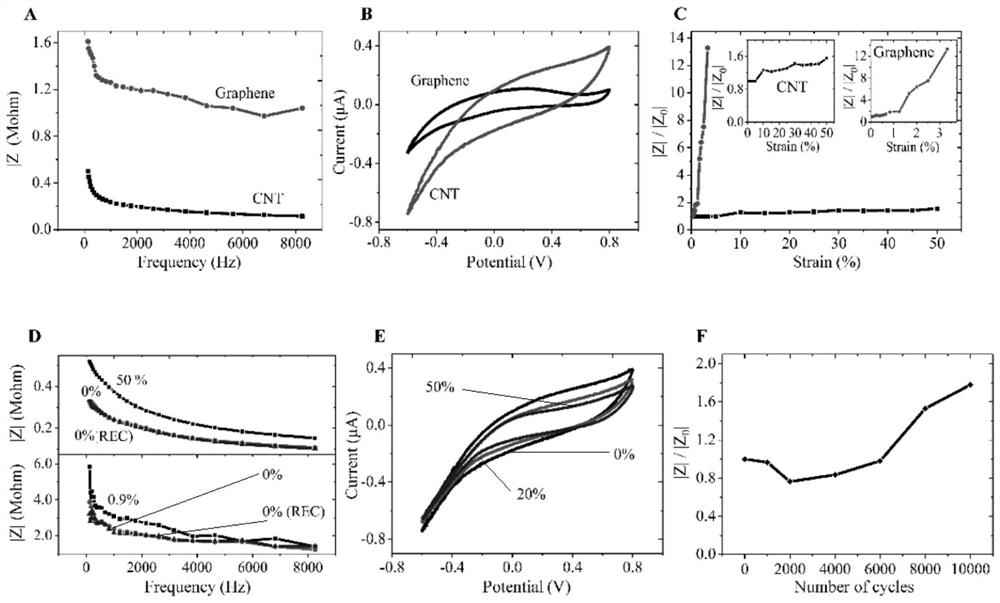Application of Flexible Transparent Carbon Nanotube Neural Electrode Arrays in Neural Optoelectronic Interfaces
A technology of electrode array and carbon nanotube film, which is applied in the field of materials to achieve high light transmittance, huge application potential, and favorable signal-to-noise ratio.
- Summary
- Abstract
- Description
- Claims
- Application Information
AI Technical Summary
Problems solved by technology
Method used
Image
Examples
Embodiment 1
[0053] Example 1, carbon nanotube film in preparing applications with mechanical active nervous system devices
[0054] 1) Characterization of carbon nanotube thin film electrode properties
[0055] We characterize the CNT film electrode array from electrical properties, mechanical properties, and two angles. In terms of electrical properties, in order to initially measure the electrical properties of the microelectrode array in the biological fluid, we first use phosphate buffer Saline, PBS to simulate the body fluid environment, and determine the micro-microdetic three-point test method in electrolyte solution Impedance of electrode arrays at different frequencies. The so-called three-point test method is based on Ag / AGCL as the reference electrode, and platinum wire is the counter electrode, the microelectrode array is a working electrode, and its electrochemical impedance spectroscopy (Electrochemical Impedancespectroscopy, EIS) is measured.
[0056] The result of the result...
PUM
 Login to View More
Login to View More Abstract
Description
Claims
Application Information
 Login to View More
Login to View More - R&D
- Intellectual Property
- Life Sciences
- Materials
- Tech Scout
- Unparalleled Data Quality
- Higher Quality Content
- 60% Fewer Hallucinations
Browse by: Latest US Patents, China's latest patents, Technical Efficacy Thesaurus, Application Domain, Technology Topic, Popular Technical Reports.
© 2025 PatSnap. All rights reserved.Legal|Privacy policy|Modern Slavery Act Transparency Statement|Sitemap|About US| Contact US: help@patsnap.com



